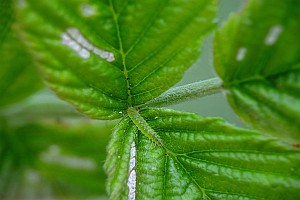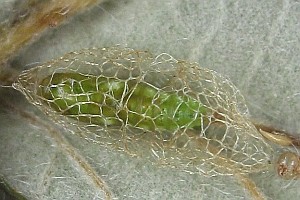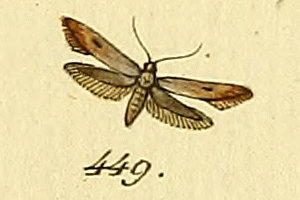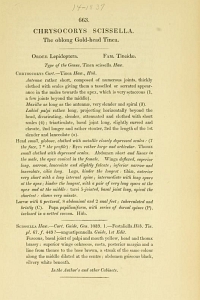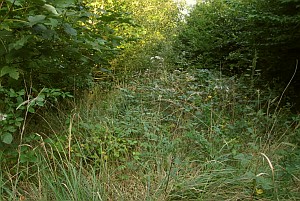Version 41 / 42 vom 24. Juni 2024 um 11:24:24 von Michel Kettner
Länder:

 +27Kontinente:EU
+27Kontinente:EU


 +27Kontinente:EU
+27Kontinente:EU
Falter
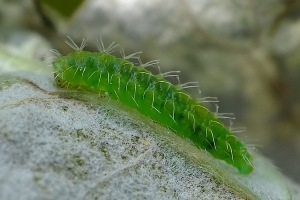
Raupe

Fraßspuren und Befallsbild
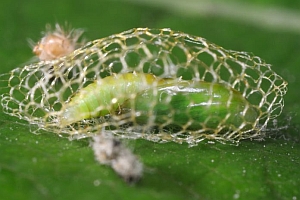
Puppe

Männchen

Weibchen

Erstbeschreibung

Beschreibung von John Curtis als Chrysocorys scissella

Habitat
Inhalt
1. Lebendfotos
1.1. Falter
1: Österreich, Niederösterreich, Sonnwendstein, montaner fichtendominierter Mischwald in 1450 m, 15. Juni 2006, am Tag auf Blüten von Stein-Baldrian Valeriana tripteris sitzend (Foto: Peter Buchner), det. Rudolf BrynerForum
2-3: Schweiz, St.Gallen, Wattwil, 750 m, 3. Mai 2012, Tagfund (det. & fot.: Pia Rindlisbacher), conf. Alexandr ZhakovForum
4: Deutschland, Nordrhein-Westfalen, bei Erndtebrück-Altenteich, 555 m, 16. Juni 2013, Tagfund (Freilandfoto: Rainer Winchenbach), conf. Thomas GuggemoosForum
5-6: Deutschland, Niedersachsen, Umgebung Beckedorf, 150 m, Mischwald auf den Bückebergen, 17. September 2014, Raupenfund an Himbeere (Rubus idaeus), e.l. 3. April 2015 (leg., cult., det. & fot.: Tina Schulz)Forum
7: Deutschland, Sachsen, Schöneck (Oberes Vogtland), Waldlichtung , ca. 700 m, 6. Juni 2013, Tagfund (det. & fot.: Steffen Hintersaß), conf. Alexandr ZhakovForum
8: Dänemark, Grenaa, 10 m, 2,5 km von der Küste entfernt, auf Rubus spec., 20. Mai 2014 (det. & Freilandfoto: Kjeld Brem Sørensen)Forum
9: Deutschland, Nordrhein-Westfalen, Hagen, am Licht, Dachterrasse Nähe Bucheneichenwald, 150-200 m, 28. April 2012 (det. & fot.: Josef Bücker), conf. Rudolf BrynerForum
10: Deutschland, Hessen, Hitzkirchen (Vogelsberg), 330 m, 30. Juli 2012 (fot.: Wilfried Schäfer), det. Axel Steiner, Helmut Deutsch & Daniel BartschForum
11: Deutschland, Bayern, Nähe Landsberg am Lech, ca. 650 m, Raupe am 9. Juni 2011 an Himbeere, e.l. Ende Juni 2011 (fot.: Franz Prelicz), det. Helmut KolbeckForum
12: ♀, Österreich, Steiermark, Graz, St. Peter, ca. 380 m, Garten, Mischwaldrand, am Licht, 31. März 2021 (det. & Foto: Horst Pichler)Forum
1.2. Raupe
1-3: < 10 mm, Dänemark, Grenaa, 10 m, 2,5 km von der Küste entfernt, an Rubus spec., 30. Juli 2013 (Freilandfoto: Kjeld Brem Sørensen), det. Helmut KolbeckForum
4: 6 mm, Dänemark, Grenaa, 10 m, 2,5 km von der Küste entfernt, an Rubus spec., 2. Juli 2014 (det. & Freilandfoto: Kjeld Brem Sørensen)
5-7: Jungraupe (3,5 mm), Funddaten wie Bild 4 (det. & Freilandfotos: Kjeld Brem Sørensen) [Forum 4-7]
8-11: 5,5 mm, Deutschland, Niedersachsen, Umgebung Beckedorf, 150 m, Mischwald auf den Bückebergen, an Himbeere (Rubus idaeus), 17. September 2014 (leg., cult., det. & Fotos: Tina Schulz)Forum
12: verpuppungsreif im fertiggestellten Netzkokon: Deutschland, Bayern, Nähe Landsberg am Lech, ca. 650 m, an Himbeere, 9. Juni 2011 (Foto: Franz Prelicz), det. Helmut KolbeckForum
1.3. Fraßspuren und Befallsbild
1-2: Skelettierfraß an Rubus spec.: Dänemark, Grenaa, 10 m, 2,5 km von der Küste entfernt, 30. Juli 2013 (Freilandfotos: Kjeld Brem Sørensen), det. Helmut KolbeckForum
3: Raupe und Fraßbild an Rubus spec.: Dänemark, Grenaa, 10 m, 2,5 km von der Küste entfernt, 2. Juli 2014 (det. & Freilandfoto: Kjeld Brem Sørensen)Forum
4-5: Fraßbild an Himbeere (Rubus idaeus): Deutschland, Niedersachsen, Umgebung Beckedorf, 150 m, Mischwald auf den Bückebergen, 17. September 2014 (Freilandfotos: Tina Schulz)Forum
1.4. Puppe
1: Deutschland, Bayern, Nähe Landsberg am Lech, ca. 650 m, Raupe am 9. Juni 2011 an Himbeere, verpuppt 10. Juni 2011 (fot.: Franz Prelicz), det. Helmut KolbeckForum
2-3: Deutschland, Niedersachsen, Umgebung Beckedorf, 150 m, Mischwald auf den Bückebergen, Raupe an Himbeere 17. September 2014 (leg., cult., det. & Fotos am 8. Oktober 2014: Tina Schulz)Forum
2. Diagnose
2.1. Männchen
1: ♂, Finnland, Uusimaa, Inkoo, 13. Juni 2006 (leg., det., coll. & fot.: Pekka Malinen, kleines Bild redaktionell an Standardmaße angepasst)
2.2. Genitalien
2.2.1. Weibchen
1-2: ♀, Österreich, Steiermark, Graz, St. Peter, ca. 380 m, Garten, Mischwaldrand, am Licht, 31. August 2020 (det., präp. & Foto: Horst Pichler) [Falterfotos im Forum]
3-4: ♀, Österreich, Steiermark, Graz, St. Peter, ca. 380 m, Garten, Mischwaldrand, am Licht, 31. März 2021 (det., präp. & Foto: Horst Pichler)Forum
5: ♀, Österreich, Steiermark, Graz, Schöckl (Grazer Hausberg), sonniger Forstweg, Tagfang, 1200 m, 2. Juni 2021 (det., präp. & Foto: Horst Pichler)Forum
2.3. Erstbeschreibung
1-2: Hübner, J. [1819: pl. 67 fig. 449] [nach Copyright-freiem Scan auf www.biodiversitylibrary.org]
2.4. Beschreibung von John Curtis als Chrysocorys scissella
1-3: Curtis (1823-1840) [nach Copyright-freien Scans auf www.biodiversitylibrary.org]
3. Biologie
3.1. Habitat
1: Larvalhabitat, Dänemark, Grenaa, 10 m, 2,5 km von der Küste entfernt, 30. Juli 2013 (Foto: Kjeld Brem Sørensen)Forum
2: Larvalhabitat, Dänemark, Grenaa, 10 m, 2,5 km von der Küste entfernt, 2. Juli 2014 (Foto: Kjeld Brem Sørensen)Forum
3: Larvalhabitat, schattiger Randbereich einer künstlich geschaffenen Lichtung mit Rubus-Sträuchern: Deutschland, Niedersachsen, Umgebung Beckedorf, 150 m, Mischwald auf den Bückebergen, 17. September 2014 (Foto: Tina Schulz)Forum
4-5: Raupe an Himbeere fressend, Schweiz, Kanton Bern, Kandersteg, Oeschinensee, 1645 m, besonnte Himbeersträucher am Wegesrand, 23. August 2016 (Fotos: Tina Schulz)
3.2. Nahrung der Raupe
- [Rosaceae:] Rubus idaeus (Himbeere)
- [Rosaceae:] Rubus fruticosus agg. (Brombeere)
Die Raupen skelettieren durch ihren Schabefraß Blätter von Himbeeren und Brombeeren, insbesondere solche an schattigen Standorten. Ramadan (2014) nennt für Hawaii noch eine Reihe weiterer genutzter Rubus-Arten.
(Autor: Erwin Rennwald)
4. Weitere Informationen
4.1. Andere Kombinationen
- Tinea festaliella Hübner, [1819] [Originalkombination]
4.2. Synonyme
- Chrysocorus angustipennella Curtis, 1833
- Chrysocorys scisscella (Haworth, 1828)
4.3. Literatur
- Curtis, J. (1823-1840): British Entomology; Being Illustrations and Descriptions of the Genera of Insects Found in Great Britain and Ireland: Containing Coloured Figures from Nature of the Most Rare and Beautiful Species, and in Many Instances of the Plants upon which they are Found. Vol. VI. Lepidoptera, Part II. — [Not paginated]. London (E. Ellis & Co.).
- Erstbeschreibung: Hübner, J. [1796-1834]: Sammlung europäischer Schmetterlinge 8: pl. 1-71.
- Ramadan, M.M. (2014): Blackberry skeletonizer moth, Schreckensteinia festaliella: natural distribution and egg parasitism on six Rubus species in tropical Hawaiian rainforest. - Conference Paper [Conference: XIVth International International Symposium on Biological Control of Weeds from March 2 - 7, 2014. At: Skukuza, South Africa]. [zur Arbeit auf researchgate.net]
- [SCHÜTZE (1931): 108]


















































